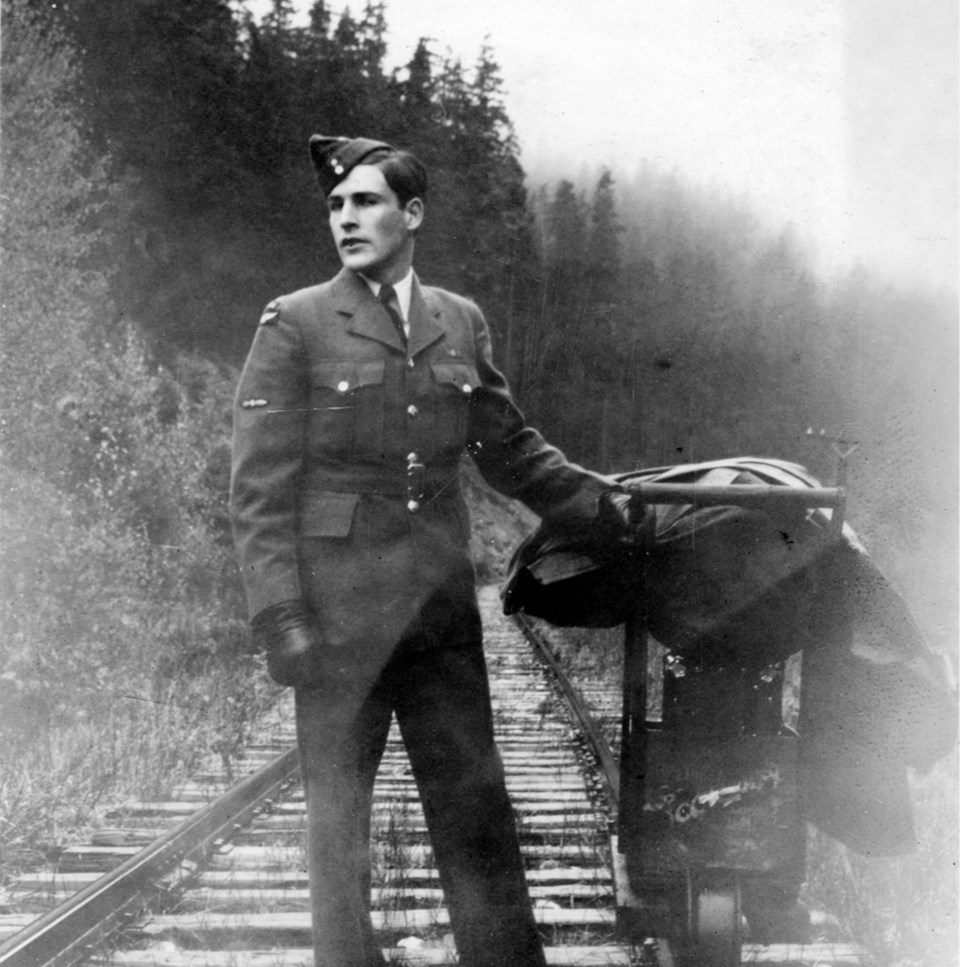The construction of the Pacific Great Eastern Railway (PGE) through the small community of Alta Lake greatly improved the quality of life for many of its residents. Starting on October 11, 1914, Alta Lake received rail service, granting easier access to services and amenities from the Lower Mainland. It also made visiting the newly established Rainbow Lodge easier for the early tourists of the Whistler region. While the establishment of a railway affected the residents of Alta Lake in a direct capacity, the community also adapted and utilized the new infrastructure in innovative and unprecedented ways.
A 2012 entry to the Whistler Museum’s Whistorical blog entitled “Sparks and Speeders” showcased how those who worked on the PGE used speeders and handcarts in order to traverse and repair the railway. However, the usage of such vehicles was not limited just to those who worked on the railway. Residents of Alta Lake also utilized handcarts and speeders in order to travel, both for pleasure and simply to shorten travel time. One image from the Museum’s collections shows Sala Ferguson, who moved to Alta Lake with her mother in 1923, and another unidentified girl using a railway velocipede, a three-wheeled handcart that ran along the tracks.
Even after the railway was constructed and trips to either Squamish or Vancouver were made significantly less arduous and time-consuming, walking remained the primary form of transportation for those living in Alta Lake. However, locals would no longer walk the Pemberton Trail; instead, they walked the newly installed railway. While walking the rails both then and now is both dangerous and illegal, at the time it was often an efficient way for residents to get to where they needed to be.
Bob Jardine and his sister Jenny Betts (Jardine), who first came to Alta Lake as children in the 1920s, recalled that the fastest way to get to school was to walk two and a half miles along the tracks. While their parents and other adults did warn them about the dangers of using the railroad in such a way, Bob recounted that everyone in the community was aware of how the tracks were used, stating that “the train crews kept an eye out for us kids.”
As the years went on, using the tracks remained the most popular way of travelling. John Burge, who first visited with his parents in 1956, recalled that “there were only really two ways of moving around. One was the railway tracks, which was the most popular way, and the other was the back road, what we called the Pemberton Trail.”
A symbol that exemplifies how the residents of Alta Lake adapted to their changing environment is the handcart built by Bob. According to Jenny, the cart was built out of pinewood and was pushed along the track using handmade wooden spools, which were later replaced by metal wheels donated by another local resident, Ross Barr. Jenny recalled that “Henry Horstman, when we came, used to have a cart—it had two wheels to run off one rail and one wheel to run on the other end, and you had to load it with all of our stuff and then you wheeled it down from the station to his farm.” Jenny credited Horstman’s cart as inspiration for their own handcart.
Even though rail service was somewhat infrequent during the early years, the utilization of the tracks as a footpath allowed the residents of Alta Lake to improve their daily routines. This is best exemplified by how they utilized handmade carts and mechanized speeders to travel the tracks on their own terms.
Crispin Wellburn is one of two summer students working at the Whistler Museum this summer through the Young Canada Works Program. He returns to the University of British Columbia in the fall




